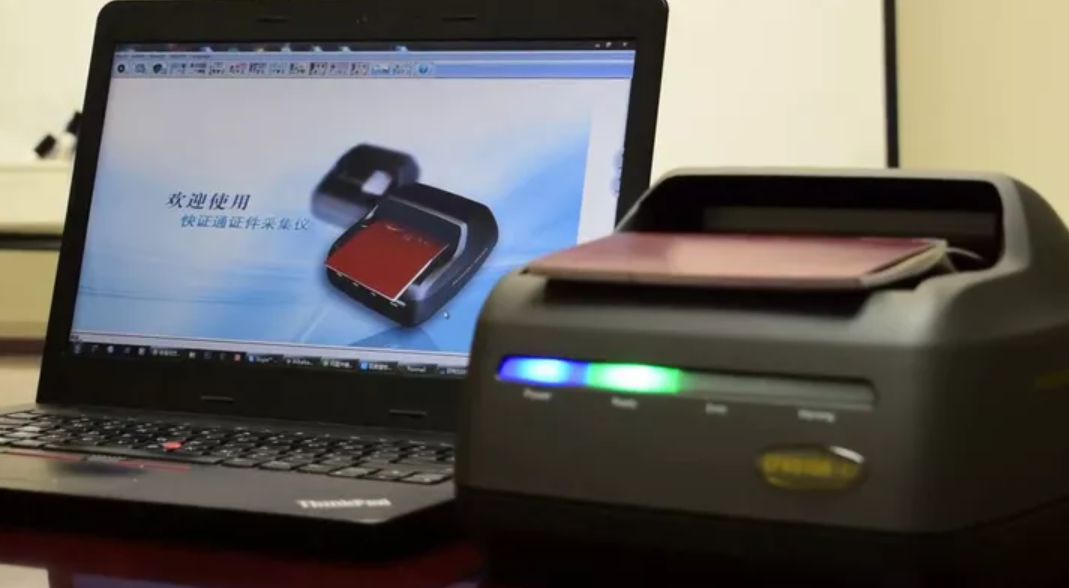Caesar is a hard-working individual who excels in business. He has been working in the same company for many years and has climbed the ranks to become one of the top employees. Caesar is dedicated to his work and takes great pride in providing value to his team and customers. He is an excellent problem solver and always looks for ways to improve efficiency and productivity. When he's not working, Howard enjoys spending time with his family and friends. He loves being active outdoors, playing sports, and exploring new places.

A passport scanner is a device that scans the information on your passport and verifies it with the information stored in your government’s databases. This can be done in person or online, depending on how you’re planning to travel.
How does a passport scanner work?
The process of scanning your passport is fairly straightforward. You’ll hold your passport up to the passport scanner for airport, which will take a picture of its cover page and read any barcodes printed there. If there are no barcodes, the machine will use optical character recognition (OCR) software to convert the text into digital data. The OCR software then compares the information against its own database of passports and visas to see if there are any matches.
If there’s a match, then you’re good to go — either because you already have an account with that particular airline or because you have enough points/miles/whatever that they’ll let you fly anyway. If there’s no match, then they’ll ask for additional documentation from you such as proof of citizenship or residency status.
Key Features in the Passport Scanner
There are many types of passport scanners available, each with their own unique features. These include:
Speed
It is important that a passport scanner is fast enough so that it does not delay the process of getting through security checks at airports or other places where such checks are required. A slow passport scanner can cause delays and frustration among passengers who are trying to get through quickly.
Scanning Technology
There are many different types of scanning technology available on the market today, including laser, CCD, LED and CMOS cameras. Each type has its own advantages and disadvantages over others, but all should be able to produce quality results when used correctly by an experienced operator.
Durability
A good passport scanner should be able to withstand wear and tear over time without breaking down or becoming damaged easily by dust or moisture from rain or snow etc… Durability also means that it will last longer than cheaper models which often break down after just a few months of use because they were made from cheaper materials which cannot stand up to heavy usage in busy environments such as those of airports and train stations.
Common Types of Passport Scanners
- Optical Scanners: This is one of the most common types of passport scanners used today. It is also the most affordable option available in the market. The optical scanner is made up of an LED light source, which emits a beam of light across the document being scanned and then reads the reflected light with a sensor array. This process can be compared to how some older home printers work but with a different mechanism behind it.
- Raster Optical Sensors (ROS): These types of sensors capture images by detecting patterns in pixels on a flat surface through the use of numerical values assigned to each pixel location on that surface. This type of technology is widely used in digital cameras, mobile phones and other electronic devices today because it offers high resolution images at low cost compared to other methods like CCDs or CMOS sensors. The CCDs and CMOs sensors require more expensive hardware components for their operation as well as greater precision in manufacturing processes which makes them more expensive than ROS.
Conclusion
The passport scanners have become a part of today’s lives and there are many ways through which you can identify the person with the help of these scanners. The fact is the machines are becoming more sophisticated day by day, thanks to their various features that are helping in so many ways. Here you’ve just learnt about some of the best features of a passport scanner that have been introduced keeping in mind the vital requirement of today’s time.
So, travelers will surely benefit from the new features these handheld passport scanners have to offer. Whether saving time or making the entire process of going through customs easier, these devices are highly convenient and worth their weight in gold.
